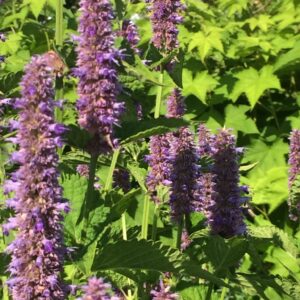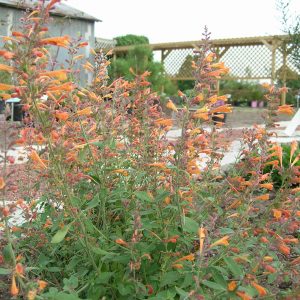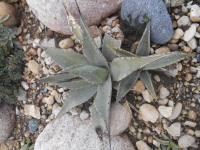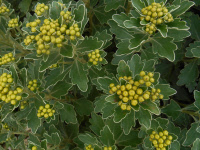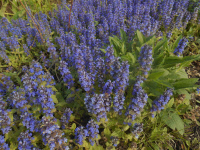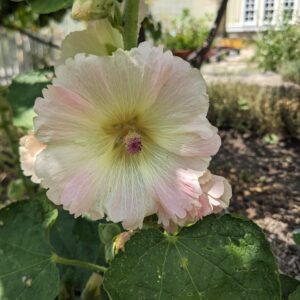Shop
Showing 25–32 of 778 results
-
Agastache aurantiaca Navajo sunset Z 5-9
Brilliant light orange blooms from spring-fall, silvery-grey aromatic foliage
ARCHIVED
Note: This is a plant not currently for sale. This is an archive page preserved for informational use.
Brilliant light orange blooms from spring-fall, silvery-grey aromatic foliage
Size: 12-18” x 24”
Care: sun in well-drained soil
Native: Western US
Wildlife Value: attracts bees, butterflies, hummingbirds, and birds. Deer and rabbit resistantPublished in American Midland Naturalist 1945.
-
Agastache foeniculum Anise hyssop Z 4-8
Purplish-blue spikes from July to October. Fragrant foliage.
Purplish-blue spikes from July to October. Fragrant foliage.
Size: 2-3' x 12"
Care: Full sun in well-drained soil, heat and drought tolerant.
Native: North America, Wisconsin native.
Wildlife Value: Skipper butterflies and Rusty patched Bumble Bees love Anise hyssop’s nectar, deer resistant.The name Agastache is from Greek agan and stachys meaning much like an ear of wheat referring to the shape of the flower spike. Anise hyssop leaves were used by American Americans of the Missouri River region to make tea and as a sweetener in cooking. For Cheyenne it relieved chest pain due to coughing or to a dispirited heart. Listed as an aromatic herb in McMahon’s 1805 book.
-
Agastache rupestris Sunset hyssop Z 5-10
Tangerine & lilac spikes June - October, fragrant like anise
ARCHIVED
Note: This is a plant not currently for sale. This is an archive page preserved for informational use.
Tangerine & lilac spikes June – October, fragrant like anise
Size: 24”x 10”
Care: full sun in well-drained soil
Native: SW United States
Wildlife Value: Attracts bees, butterflies and hummingbirds
Awards: 1997 Plant Select award recipient.Collected by Edward Lee Greene in 1880 at Mango Springs neara Solver City New Mexico. Pittonia 1:164.
The name Agastache is from Greek agan and stachys meaning “much like an ear of wheat” referring to the shape of the flower spike. Rupestris means “rock loving.” -
Agave parryi Mescal agave, Parry’s agave, Century plant Z 5 (with care) – 10
Rosette of thick silver-grey leaves with an inch-long terminal tip of each spine
ARCHIVED
Note: This is a plant not currently for sale. This is an archive page preserved for informational use.
Rosette of thick silver-grey leaves with an inch-long terminal tip of each spine and offshoots, knowns as “pups” emerge near the base, even of young plants. Flowers only once & takes +10 years. In Z 5-6 plant in spring to get established.
Size: 18” x 18-28”
Care: sun in well-drained soil. We grow this in Z 5A on the south-facing side of a mound of well-drained soil, with a few large rocks nearby and gravel mulch.
Native: mountains of Arizona and New Mexico.First Americans in the SW traded baked leaves and buds hundreds of years ago. Roasted stalks,baked buds & water mixed & fermented make pulque, further distilled to make mescal or tequila.
-
Ajania pacifica syn. Chrysanthemum pacifica Silver and Gold Z 5-9
Mounds of decorative, silver-edged foliage all summer with sunshine yellow button flowers in October to November
ARCHIVED
Note: This is a plant not currently for sale. This is an archive page preserved for informational use.
Mounds of decorative, silver-edged foliage all summer with sunshine yellow button flowers in October to November
Size: 12-24” x 12-36”can pinch back in June to make compact
Care: sun in well-drained to moist well-drained soil
Native: coasts of Japan1st described by Japanese botanist Takenoshin Nakai in Botanical Magazine 42: 462. 1928.
-
Ajuga genevensis Geneva Bugle Z 4-9
True blue 6” spikes in spring and early summer
Ajuga genevensis Geneva Bugle Z 4-9
True blue 6” spikes in spring and early summer. Great groundcover.Size: 6” x 12”
Care: full sun to shade in well-drained to moist well-drained soil
Native: Europe
Wildlife Value: Tolerates foot traffic. Deer and rabbit resistant.William Robinson, father of the mixed perennial garden, called this “among the best.” (1933). In gardens before 1753.
-
Alcea rosea Hollyhock BIENNIAL
Early to late summer spikes of single platters - mixed colors. The classic cottage garden flower.
Early to late summer spikes of single platters – mixed colors. The classic cottage garden flower.
Size: 5-8' x 24"
Care: Sun in moist well-drained to well-drained soil. Drought tolerant
Native: West Asia
Wildlife Value: Butterfly plant, host for Painted Lady butterfliesCultivated in China for thousands of years where it symbolized the passing of time. They cooked the leaves for a vegetable and also ate the buds. Transported from Middle East to Europe by the Crusaders and introduced to England by the 1400’s. Culpepper, a 17th century English herbalist, claimed the plant could be used to cure ailments of the “belly, Stone, Reins, Kidneys, Bladder, Coughs, Shortness of Breath, Wheesing, … the King’s Evil,, Kernels, Chin-cough, Wounds, Bruises, Falls. . . (and) Sun-burning.” Both single and double forms grew in England by the time of Parkinson (1629). Parkinson said they came “in many and sundry colours.” John Winthrop Jr. introduced the 1st hollyhock to the New World in the 1630’s.
-
Alcea rosea var. nigra Black hollyhock BIENNIAL Z 4-9
Early to late summer spikes of single jet-black/maroon platters.
Early to late summer spikes of single jet-black/maroon platters.
Size: 5-8’ x 24”
Care: sun in well-drained soil
Native: West Asia
Wildlife Value: Attracts bees, butterflies and birdsHollyhocks have been cultivated in China for thousands of years where it symbolized the passing of time. They cooked the leaves for a vegetable and also ate the buds. Transported from Middle East to Europe by the Crusaders and introduced to England by 1573. Grown in the Eichstätt Garden, the garden of Johann Konrad von Gemmingen, prince bishop of Eichstätt in Bavaria, c. 1600. Culpepper, a 17th century English herbalist, claimed the plant could be used to cure ailments of the “belly, Stone, Reins, Kidneys, Bladder, Coughs, Shortness of Breath, Wheesing, … the King’s Evil,, Kernels, Chin-cough, Wounds, Bruises, Falls. . . (and) Sun-burning.” Both single and double forms grew in England by the time of Parkinson (1629). Parkinson said they came “in many and sundry colours.” John Winthrop Jr. introduced the 1st hollyhock to the New World in the 1630’s.
In the 1880’s Mr. W. Charter of Saffron Walden in England cultivated frilly doubles, now known as ‘Charter’s Doubles.’


